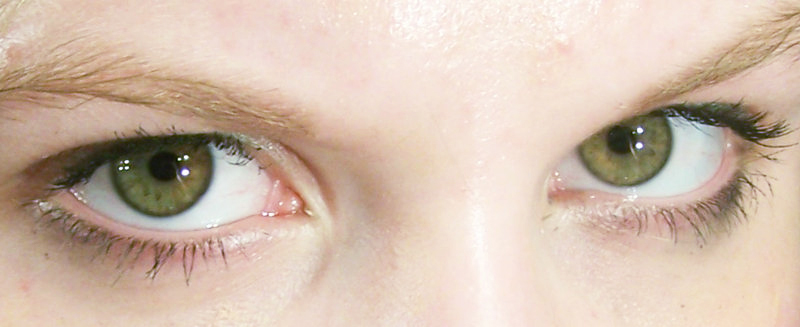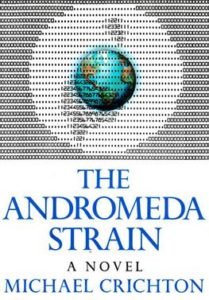Vitamin D
We should all know how important it is, but … an alarming number of people that I have spoken with do not realize how important it is for our health and well being.
It is likely that many of the diseases that we consider to be diseases of the developed world are due at least in part to decreasing vitamin D. These diseases include heart disease, autoimmune diseases, and diabetes. And it turns out that the levels of vitamin D that you need to prevent those illnesses is much higher than the level you need to prevent rickets, which is why in the vitamin D community we think that there is a widespread vitamin D deficiency, even though we really don't see rickets very often.
In the US, there are several diseases such as high blood pressure and type 2 diabetes that are much more prevalent in black people than in other ethnic groups. This could very well be due to lower levels of vitamin D, because darker skinned people need to spend much more time in the sun to generate adequate vitamin D.
They're doing some research at the university of Minnesota on autism linkages to vitamin D linked to the Somali population in Minneapolis.
Apparently there isn't even a word for this condition in the Somali language but it has been appearing in the Somali community there at an alarming rate. While it does sound plausible that a rise in autism coincides with a decrease in vitamin D, what with the advent of indoor entertainment, but of course we all know correlation != causation.
I think the Somali population could prove to be a very interesting control group.
I'd be interested in more study with maternal vitamin D status as a risk factor for autism in children as well. There is some thought that autism might be due to maternal antibodies attacking the fetus, causing problems during brain development.
As you can see vitamin D does a whole lot more than prevent rickets, though. Vitamin D regulates a whole bunch of stuff including blood pressure (it inhibits the Renin enzyme which regulates the body's mean arterial blood pressure), the immune system, hormonal activity (including insulin), and many other important biological processes.
A lot of people just think spending time in the sun is enough, but like most things it is more complicated than that.
In other words more exposure to solar radiation.
It turns out solar radiation correlates with skin tone at a strength of about 60-70%. There is another explaining factor that is also very important.
Vitamin D in your food.
One control group that was studied for vitamin D levels … Inuits. They live very far north, yet they have darker skin than many Europeans.
Why?
It's because the Inuit diet is very high in fish which have substantial amounts of Vitamin D, while most white Europeans and Americans are often Vitamin D deficient due to our diets. Hence we have lighter skin despite having more solar radiation.
 My boyfriend has a red beard, I’ll tease him about being Red Beard the Pirate, which compliments my redhead quite well.
Other than that he has dark hair. Which he thinks of as odd, but actually it is quite common. There are different genes for red hair on your head versus red hair in your beard (if you’re a guy, girls get it lasered), and the genes for red beards are much more common than red heads.
Look closely at guys’ beards; you’ll often find they’re sort of calico, a mix of black and brown and red and white and grey.
This kind of mix is very common.
My boyfriend has a red beard, I’ll tease him about being Red Beard the Pirate, which compliments my redhead quite well.
Other than that he has dark hair. Which he thinks of as odd, but actually it is quite common. There are different genes for red hair on your head versus red hair in your beard (if you’re a guy, girls get it lasered), and the genes for red beards are much more common than red heads.
Look closely at guys’ beards; you’ll often find they’re sort of calico, a mix of black and brown and red and white and grey.
This kind of mix is very common.  My boyfriend has a red beard, I’ll tease him about being Red Beard the Pirate, which compliments my redhead quite well.
Other than that he has dark hair. Which he thinks of as odd, but actually it is quite common. There are different genes for red hair on your head versus red hair in your beard (if you’re a guy, girls get it lasered), and the genes for red beards are much more common than red heads.
Look closely at guys’ beards; you’ll often find they’re sort of calico, a mix of black and brown and red and white and grey.
This kind of mix is very common.
My boyfriend has a red beard, I’ll tease him about being Red Beard the Pirate, which compliments my redhead quite well.
Other than that he has dark hair. Which he thinks of as odd, but actually it is quite common. There are different genes for red hair on your head versus red hair in your beard (if you’re a guy, girls get it lasered), and the genes for red beards are much more common than red heads.
Look closely at guys’ beards; you’ll often find they’re sort of calico, a mix of black and brown and red and white and grey.
This kind of mix is very common.  When both parents have blue eyes, and you have green eyes. Technically blue and green are both recessive traits, so your parents are both carriers of the green eye color and it just happened to come out in you.
For comparison, my dad has blue eyes, mother brown. I have blue/grey eyes, my sister has blue and my brother has hazel. Because my dad has a recessive eye color, he doesn’t have the brown (dominant) trait, and a carrier of at least green, grey and hazel And my mother was a carrier of blue, grey and hazel as well.
Keep in mind that eye color, hair color, etc. are a bit more complicated than just dominant vs. recessive but this is how basic biology explains it.
Here in the US, where 1 in 6 people have blue eyes, having green eyes becomes rare.
When both parents have blue eyes, and you have green eyes. Technically blue and green are both recessive traits, so your parents are both carriers of the green eye color and it just happened to come out in you.
For comparison, my dad has blue eyes, mother brown. I have blue/grey eyes, my sister has blue and my brother has hazel. Because my dad has a recessive eye color, he doesn’t have the brown (dominant) trait, and a carrier of at least green, grey and hazel And my mother was a carrier of blue, grey and hazel as well.
Keep in mind that eye color, hair color, etc. are a bit more complicated than just dominant vs. recessive but this is how basic biology explains it.
Here in the US, where 1 in 6 people have blue eyes, having green eyes becomes rare.
 I really enjoyed The Andromeda Strain, which is one of his earlier books. I wish that I could go back and read it for the first time again.
It has all of the exceptional things that you want out of a Crichton book. Including dangerous science fiction tech issue, the unlikeable characters that die and you’re happy about it, and people making mistakes that make the problem bigger.
In fact, one of the things that still stands out to me after all these years is the part where Crichton is describing someone’s actions and basically states that this is the point where he made a mistake. If he did the other thing, it would have ended. But he didn’t and it all gets out of hand.
Jurassic Park is an epic classic of course.
I also liked Congo and Sphere. Congo was one of his books that freaked me out.
~XO
I really enjoyed The Andromeda Strain, which is one of his earlier books. I wish that I could go back and read it for the first time again.
It has all of the exceptional things that you want out of a Crichton book. Including dangerous science fiction tech issue, the unlikeable characters that die and you’re happy about it, and people making mistakes that make the problem bigger.
In fact, one of the things that still stands out to me after all these years is the part where Crichton is describing someone’s actions and basically states that this is the point where he made a mistake. If he did the other thing, it would have ended. But he didn’t and it all gets out of hand.
Jurassic Park is an epic classic of course.
I also liked Congo and Sphere. Congo was one of his books that freaked me out.
~XO

 I have red (don’t believe everything you read) that the Udmurt People are the most red haired in the world, even more than the Irish.
I don’t know of any data to back that up, but they do have a lot of redheads.
~XO
I have red (don’t believe everything you read) that the Udmurt People are the most red haired in the world, even more than the Irish.
I don’t know of any data to back that up, but they do have a lot of redheads.
~XO  This is just speculation, hearsay and lack of real evidence. But I thought that I would use it as a topic today to post about. Mainly because this is something that people tell me all the time. In part, it is an attempt to make conversation, they want to connect with me.
Or hit on me.
It is usually the latter when I am out clubbing; regardless of how often I hear it, it always came across as suspicious. Though I am naturally a skeptical person; especially when the motivation behind the statement is only a pretense to get close.
This is just speculation, hearsay and lack of real evidence. But I thought that I would use it as a topic today to post about. Mainly because this is something that people tell me all the time. In part, it is an attempt to make conversation, they want to connect with me.
Or hit on me.
It is usually the latter when I am out clubbing; regardless of how often I hear it, it always came across as suspicious. Though I am naturally a skeptical person; especially when the motivation behind the statement is only a pretense to get close.


